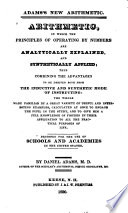 | Daniel Adams - Arithmetic - 1830 - 280 pages
...this the dividend. IV. Multiply the square of the quotient by 300, calling it the divisor. V. Seek how many times the divisor may be had in the dividend, and place the result in the root; then multiply the divisor by this quotient figure, and write the product... | |
 | Daniel Adams - Arithmetic - 1830 - 294 pages
...this the dividend. IV. Multiply the square of the quotient by 300, calling it the divisor. V. Seek how many times the divisor may be had in the dividend, and place the result in the root; then multiply the divisor by this quotient figure, and write the product... | |
 | Thomas Conkling (W.) - Arithmetic - 1831 - 302 pages
...Involve the root into the next inferior power to that which is given, and multiply it by the index, or number, denoting the given power, for a divisor. 5. Find how many times the divisor h contained in the dividend, and annex the result to the root. 6. Involve all the root, thus found,... | |
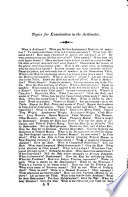 | William Kinne - Accounting - 1831 - 248 pages
...period, and call it the dividend. 4. Involve the root to the next inferiour power to that which is given, and multiply it by the number denoting the given power, for a divisor. 6. Involve the whole root to the given power, and subtract it from the given number as before. 5. Find... | |
 | Daniel Adams - Arithmetic - 1831 - 276 pages
...this the dividend. IV. Multiply the square of the quotient by 300, calling it the divisor. V. Seek how many times the divisor may be had in the dividend, and place the result in the root; then multiply the divisor by this quotient figure, and write the product... | |
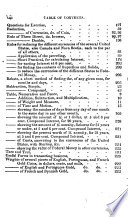 | Nathan Daboll - Arithmetic - 1831 - 246 pages
...next period, and call it the dividend. 4. Involve the root to the next inferior power to that which is given, and multiply it by the number denoting the given power, for u divisor. 5. Find how many times the divisor may be had in the dividend, and the quotient will be... | |
 | William Ruger - Arithmetic - 1832 - 282 pages
...period for an imperfect dividend. 3. Involve the root to the next inferiour power to that which is given, and multiply it by the number denoting the given power, for a divisor; by which find a second figure of the root. 4.. Involve the whole ascertained root to the given power;... | |
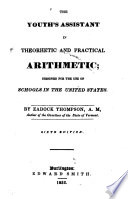 | Zadock Thompson - Arithmetic - 1832 - 182 pages
...call these the dividend. Involve the root already found to the next inferior power to that which is given, and multiply it by the number denoting the given power for a divisor. Find how many times the divisor may be had in the dividend, and the quotient will be another figure... | |
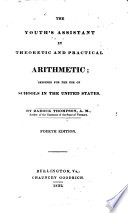 | Zadock Thompson - Arithmetic - 1832 - 186 pages
...call these the dividend. Involve the root already found to the next inferior power to that which is given, and multiply it by the number denoting the given power for a divisor. Find how many times the divisor may be had in the dividend, and the quotient will be another figure... | |
 | Lyman Cobb - Arithmetic - 1832 - 228 pages
...this the/ dividend. 4. Multiply the square of the quotient by 300, calling it the divisor. 5. Seek how many times the divisor may be had in the dividend, and place the result in the quoiient or root; then multiply ihe divisor by this quotient figure, and write... | |
| |